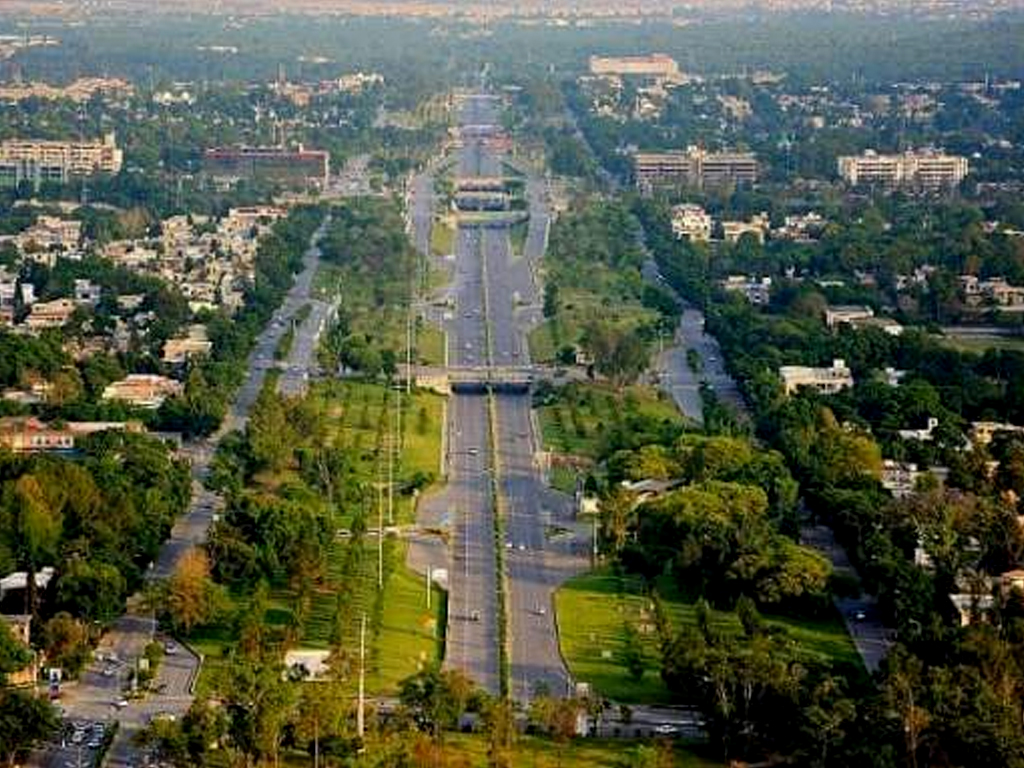High-rise housing for Islamabad

Sitting in the lap of lush green Margallas, the national capital, Islamabad, is no more that green and serene habitat the planners had actually envisaged; it has, unfortunately, swelled beyond all imagined limits. Now it is city of some two million people, quite a big chunk of them living in housing slums, locally called katchi abadis. Of these slums numbering about 50, only 10 are recognized by the Capital Development Authority (CDA). But one would be darn naïve to think that those inhibiting illegal slums can be kept out of a programme benefiting their counterparts. These slums, both legal and illegal and populated by city's working classes, are a 'direct consequence of unplanned growth, poverty, urban development needs and the displaced by natural disasters or conflict'. Consequently, the city is getting out of breath and therefore unable to square up to problems of unplanned growth, population pressure and business activity. No wonder then the concerned authorities are juggling with different options to enlarge necessary breathing space. The latest on the table, and probably the one that has the desired potential to deliver, is vertical development. And that it should begin with regeneration of katchi abadis as high-rise condominiums. To begin with, the CDA would like to begin with a pilot project by converting F-7 France Colony and F-6 100-Quarters Colony. Should this project work out, the government would be well placed to undertake work in many other slums and government quarters in various sectors. There are nearly 7,000 old government residences but government needs many more given that some 25,000 government employees live in hired houses. The land occupied by these residences is more than enough not only to have residences to accommodate the present occupants but also provide for green belts and parking areas. Thus the decision to encourage high-rise structures as against previous rules and regulations that had discouraged high-rise buildings.
But all of it is easier said than done. Some formidable challenges are in place to discourage, if not disrupt, this plan; some of which would come to the fore during execution of the announced pilot project. The one foremost is willingness on the part of present occupants to surrender their residences. Since similar projects have been successfully executed in a number of countries, more relevantly in Turkey and Malaysia, there are these models the Capital Development Authority can copy. How efficiently the CDA handles, or mishandles, the regeneration project in these Christian colonies in F-6 and F-7 it would greatly impact the grand plan to have high-rises instead of low-roofed housing in the Capital. Given present dwellers' law-abiding culture the move is expected to be welcomed. But the government is required to ensure that not only are they provided accommodation for the interim period, they are also given a guarantee that they wouldn't end up as homeless. To secure finances for the projects is the other challenge, and clearly more formidable. Who would provide the needed finance for construction of high-rises? For that the government may need to step in by firming up a very clear policy marking out how it would be done and by whom. In other countries, governments make a rehabilitation pledge to the residents of slums, who vacate the land in their control. The land is then divided into three parts. One of three parts is reserved for the slum residents' apartment buildings, another for the contractor to build and sell as his own to recover the cost he incurs, and the rest is left open for use as park and/or any other outdoor activity. Since the project involves huge expenditure, the contractor should be in the form of a consortium including banks, material suppliers and engineering firms. Given a likely possibility of reluctance on the part of banks to be part of such a consortium, the government should seek assistance from the State Bank of Pakistan to underwrite the banks' commitments.
The CDA is reportedly optimistic about this 'ideal deal'. According to it, "if all goes as planned, we will not only provide best accommodation to the poor in the shape of apartments but will also generate revenues amounting to billions of rupees." The key word, however, is "if" - a proviso that tends to raise quite a few eyebrows.





















Comments
Comments are closed.